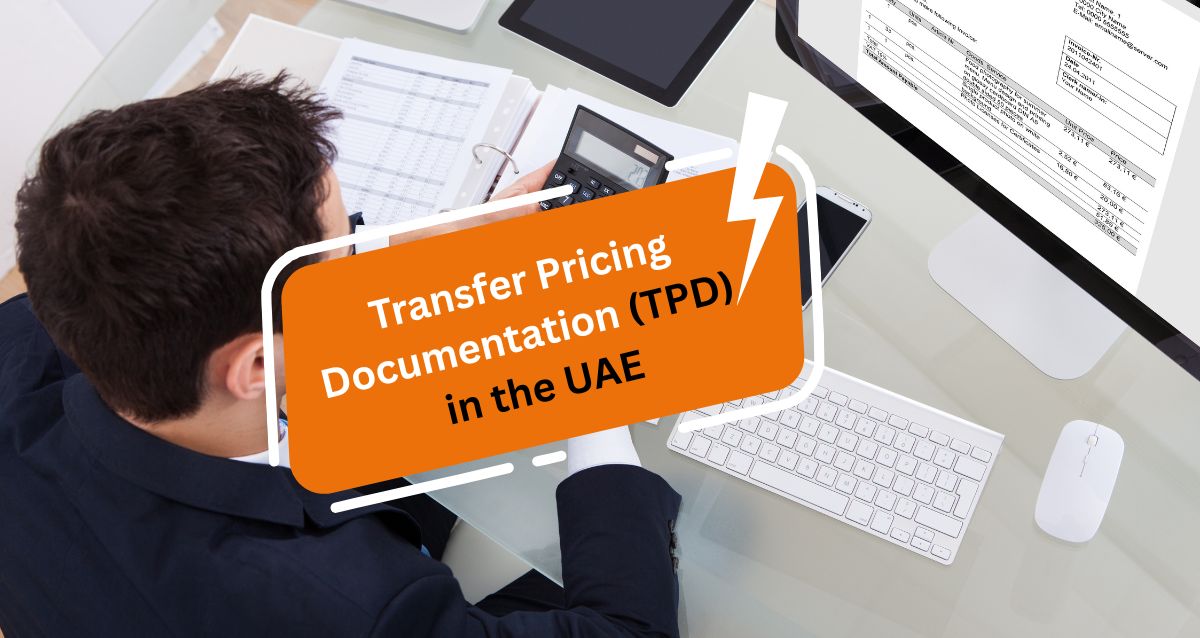Transfer Pricing Documentation (TPD) in the UAE: What You Need to Know to Stay Audit-Ready
Transfer Pricing (TP) documentation is a significant new compliance obligation which was came into picture with the introduction of Corporate Tax in UAE. Under this, just having an arm’s length policy in place is no longer enough, every business must be able to prove it. For the Federal Tax Authority (FTA), your TP documentation is the proof to justify the related party transactions.
When the FTA comes asking further details on your related party transactions, the TP documentation is the proof that your transactions are justifiable, transparent and compliant with the new regulations. Failure in maintaining strong and accurate documentation may results in attracting audit, scrutiny and significant penalties.
This blog provides you a detailed overview on UAE’s Transfer pricing documentation requirements, key documents you need to prepare, the specific thresholds you have to keep in mind and how to ensure that your records are audit -ready.
The Three-Tiered Documentation Framework
The Transfer pricing documentation framework in UAE is based on the internationally recognized structure recommended by the OECD’s Base Erosion and Profit Shifting (BEPS) Action 13. It includes of three main components, each aiming a distinct purpose:
1.Transfer Pricing Disclosure Form: This form is the most immediate requirement for many businesses. It is recognized as a high - level form that should be submitted along with your annual Corporate Tax Return. It includes a summary of all your related party transactions, with its nature and value.
2.Master File: This document provides a wide view of the entire multinational enterprise (MNE) group transactions. It aims at giving FTA (Federal Tax Authority), a detailed understanding of entire group’s business operations, overall transfer pricing policies they are following and the key elements of profit. It consists of details on group’s organizational structure, description of its business operations, records of intangible assets and intercompany financing activities.
3.Local File: This is a country specific document focuses on the UAE entity within the MNE group. It gives a detailed and in-depth analysis of all the controlled transactions entered into by the local entity. This is the primary tool evidencing that the specific transactions you conducted are at arm’s length price

Understanding the Key Thresholds
Maintenance of Master File and Local file is not mandatory for every business. The UAE law has specifically mentioned the revenue and transaction value to determine the documentation requirements.
➤ For the Transfer Pricing Disclosure Form:
- This is the form which is mandatory for any taxable person whose aggregate value of related party transactions in a tax period exceeds AED 40 million.
- This threshold is very crucial to monitor, as it is applicable on a large number of businesses.
➤ For the Master File and Local File:
-
It is required to prepare both Master File and Local File if you are part of a Multinational Enterprise (MNE) group with consolidated group revenue of AED 3.15 billion or more in the relevant tax period.
- Additionally, a Local File also required if your annual revenue as a taxable person (from the UAE entity) is AED 200 million or more.
It is very important to note that even if you are not meeting these thresholds, it is still required to be complied with Arm’s Length Principle legally. You must be in a position to provide correct documentation and analysis to substantiate your inter company transactions if requested by FTA. Hence it is a best practice to maintain some form of documentation for all businesses with related party transactions.
What Makes Documentation Audit-Ready?
Having a Master and Local File is only one thing; but having them in an "audit-ready" stage is another one important thing. Under an audit-ready approach your documentation is not only required to be complete but also accurate, consistent, and defensible. We recommend a "C-F-R" approach:
C: Completeness Your documentation must contain all the required information as specified by the UAE’s Corporate Tax Law and Ministerial Decisions. This includes a detailed operational analysis, an economic analysis (comparability study), and a clear justification for your chosen transfer pricing method. Any missing piece of these information can lead to a vulnerability.
F: Factual Accuracy The data you are using must be correct, relevant, and consistent with your financial statements and internal records. This includes a truthful and accurate description of your business, the functions you performed, and the assumed risks. Any inconsistency in these data can reduce the credibility of your entire documentation.
R: Readiness The Master File and Local File are not required to be submitted with your tax return. Instead, you must be able to provide them to the FTA within 30 days of receiving a request. This means your documentation should be finalized and easily accessible. A last-minute rush to prepare these complex documents will definitely lead to errors and omissions.
The Consequences of Getting It Wrong
The FTA is very keen in checking these documentations and if any failure found they may impose penalties. Getting your documentation wrong can result in:
- Monetary Penalties: Failure to maintain the required documentation can result in a penalty of AED 10,000, with an additional AED 1,000 for each day if the failure continues after a grace period as per the law.
- Tax Adjustments: If the documentation is in sufficient to prove that your transactions are at arm’s length price the FTA have the liberty to re calculate your taxable income leading to a increased tax liability and back payments
Increased Scrutiny: Submission of inadequate documentation is a major red flag that can results in more frequent and detailed tax audits, which requires a significant amount of resources and disruptive to your business.
How Flying Colour Tax Consultant Can Help?
Preparing and maintaining documentation for transfer pricing requirements is a highly technical task that requires the assistance of specialized expertise. At Flyingcolour Tax Consultant we understand the UAE regulations and are dedicated to ensuring your business is fully compliant and audit-ready.
Our services include:
➺ Gap Analysis: We conduct a detailed analysis of your current practices to identify gaps and risks in your existing TP documentation.
➺ Dcumentation Preparation: We take on the complex task of drafting your Master File, Local File and Transfer Pricing Disclosure Form, ensuring that they are in line with all legal requirements.
➺ Benchmarking Studies: We perform detailed benchmarking analyses to provide the credible, factual data needed to justify your arm's length pricing policies.
➺ Audit Support: In the event of an FTA inspection we stand by your side helping you present your documentation and defend your transfer pricing policies.
➺ Ongoing Compliance: We offer continuous advisory services to help you stay updated on regulatory changes and adjust your documentation accordingly ensuring you are always one step ahead.
Don't let the complexity of transfer pricing documentation become a liability. By partnering with a trusted advisor you can confidently navigate into the new tax landscape and focus on what you do best for smooth running your business.
To learn more about Transfer Pricing Documentation (TPD) in the UAE, book a free consultation with one of the Flyingcolour team advisors.
Disclaimer: The information provided in this blog is based on our understanding of current tax laws and regulations. It is intended for general informational purposes only and does not constitute professional tax advice, consultation, or representation. The author and publisher are not responsible for any errors or omissions, or for any actions taken based on the information contained in this blog.

